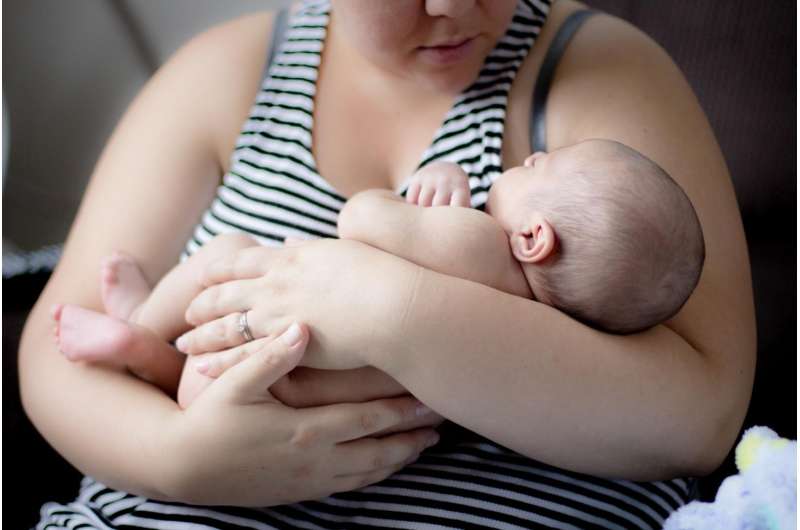January 10, 2017 report
Survey of multiple species suggests mother's preference for cradling baby on left tied to bonding

(Phys.org)—A team of researchers with members from Russia, the U.S. and Australia has found evidence that supports the theory that left-side support of babies by their mothers is tied to brain hemispherical functions. In their paper published in the journal Nature Ecology & Evolution, the researchers describe their study of multiple mammal species and how their discovery bolsters a common theory of mother/offspring bonding behavior.
Many people may not have noticed, but mothers have a very strong tendency to support their babies on their left sides, especially when cradling them. Scientists have debated the reason for this with some suggesting that it allows the babies to hear the mother's heart beat better. Others have suggested that it is due to differences in function in the two brain hemispheres. The left side is believed to be primarily concerned with processing language and making calculations, while the right side is more involved with processing emotions, recognizing faces, spatial awareness and music. The two hemispheres are also responsible for muscle control, of course, but it gets reversed in the processing—the right side of the brain controls the left side of the body while the left side of the brain controls movement of the right side of the body. A mother cradling her baby on the left, the theory goes, allows for both parties to engage more with their right hemispheres, which results in stronger bond building.
To test this theory, the researchers conducted a survey of mothers and their offspring regarding left/right tendencies in multiple mammal species including oxen, reindeer, antelope, horses, walruses, sheep, three species of whales and two species of kangaroo. In so doing, they discovered that all of those surveyed had a similar preference for cradling on the left. They also found that during normal activities, offspring tended to hang around on the left side of their mothers—during times of crisis, however, offspring were moved to the other side, presumably to allow the mother to better offer physical protection.
These findings, the researchers suggest, bolster the proposition that left/right preferences between mothers and offspring is based on brain hemispherical function.
More information: Karina Karenina et al. Lateralization of mother–infant interactions in a diverse range of mammal species, Nature Ecology & Evolution (2017). DOI: 10.1038/s41559-016-0030
Abstract
Left-cradling bias is a distinctive feature of maternal behaviour in humans and great apes, but its evolutionary origin remains unknown. In 11 species of marine and terrestrial mammal, we demonstrate consistent patterns of lateralization in mother–infant interactions, indicating right hemisphere dominance for social processing. In providing clear evidence that lateralized positioning is beneficial in mother–infant interactions, our results illustrate a significant impact of lateralization on individual fitness.
© 2017 Phys.org



















